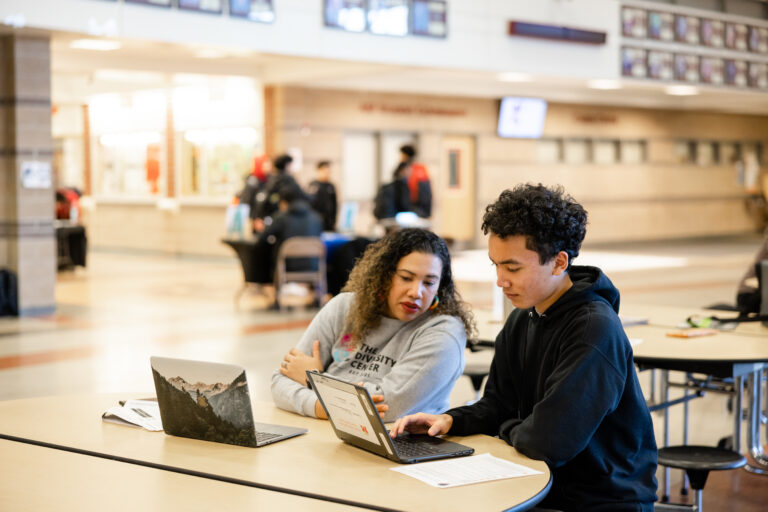
Ben Mitchell
Director of Advocacy & Policy, Foundation for Tacoma Students
Measures of academic achievement for Washington students are improving overall from an extreme low point coming out of pandemic school disruptions. But there is still a lot of work to do. Learning loss is a lingering problem everywhere – this is not a unique challenge in Washington – and there is a role for state policy to provide tools, guidance and resources to local school districts. Perhaps the most impactful policy would be to invest in high-quality tutoring at scale, and focused on the students who need the most support. This is easier said than done, but there is a way forward, and it ought to be a priority for state policymakers and leaders.
Pandemic learning loss is real problem
Students everywhere have suffered from academic and developmental setbacks associated with pandemic-era school closures. I know that the phrase “learning loss” has been criticized, and I don’t mean to stigmatize students or imply that decisions made in the midst of the pandemic were easy or clear. Students have done nothing wrong, and I don’t envy the people that had to make the calls about closing schools in 2020 and 2021.
Having said that, we now know that in the wake of the pandemic that academic gaps between students from low-income backgrounds and more affluent backgrounds have widened. This is on top of what were already growing achievement gaps in states across the country, including Washington, before the pandemic.
A really impressive joint project from researchers at Harvard and Stanford called the “Education Recovery Scorecard” breaks down data on state and district-level student academic progress between spring 2022 and spring 2023. The researchers published summary memos for each state included in their research, and here are their main takeaways for Washington:
- Between 2019 and 2022, achievement fell by 58% of a grade equivalent in math and 36% in reading.
- Disparities still persist across the state. Higher poverty districts such as Highline, Yakima and Auburn lost a full grade equivalent or more in math between 2019 and 2022. Meanwhile, the higher income districts of Bellevue, Issaquah and Northshore lost a third or less of a grade equivalent in math achievement, and in reading, those three districts actually improved during the pandemic.
- For Washington, academic recovery barely began last year. Between 2022 and 2023, math achievement improved by 9% of a grade equivalent and reading achievement actually declined by an additional 3% of a grade equivalent.
- If students in Washington continue recovering at last year’s rate, students will require an additional five years to return to 2019 levels in math.
High-quality tutoring is a proven way to address learning loss
Tutoring has long been an effective tool to educate students. And because tutoring is personalized by design, it is very well-suited to address the varied learning acceleration needs of students coming out of the pandemic.
But not all tutoring is equal. The gold standard in the field is an approach called “targeted, intensive tutoring,” or sometimes “high-dosage tutoring.” This method is exactly what it sounds like and consists of having the same tutor work with students one-on-one or in very small groups; multiple times per week; over an extended period of time; on material that is aligned with classroom curriculum. This is in contrast with less-intensive tutoring approaches, such as on-line and on-demand tutoring that students can use at their discretion. These programs are easier and cheaper to implement, but they tend to not yield strong results.
State policymakers should prioritize high-quality tutoring
There has been what I think is an odd silence on the issue of learning loss and learning recovery in state-level policy making. There was a bill in 2023 that proposed to direct a portion of COVID relief funding on high-quality tutoring that died in the Senate fiscal committee. There were two bills this year that proposed to create grant programs to support post pandemic learning recovery that never got placed on a committee hearing agenda. And another one from this year would have provided additional state funding for supplemental academic programs in schools and stipends for families to arrange tutoring, and this one was also met with the sound of crickets.
I’m not sure what to make of this. I appreciate that lawmakers are working with a finite budget and that they have to prioritize, but I’m surprised that over the last three legislative sessions that there has not been more energy in state policymaking for learning recovery.
There’s also the issue of implementing all of the federal relief dollars for education. And while it’s true that 90% of these funds are controlled at the local level, lawmakers and state agencies could recommend investing in high-quality tutoring, or share guidance that encourages it, or do any number of non-legislative communications that convey to local education leaders that learning recovery is a state priority.
Instead, our own nonpartisan policy auditor – an agency called the Joint Legislative Audit & Review Committee – concluded in 2023 that racial disparities in student assessment scores increased during the COVID-19 pandemic, especially in higher poverty schools. And that we don’t have a plan to monitor the effectiveness of federally funded interventions to promote learning recovery.
Scaling high-quality tutoring is hard, but doable
Delivering high-quality tutoring at the scale that we need in Washington is easier said than done. It would be quite expensive – which I’ll come to a minute – and also presents all kinds of logistical hurdles. It’s not the case that nobody wants to see targeted intensive tutoring made available to a wide range of students, it’s just fundamentally hard to do.
But you can find write-ups of successful examples of school districts and individual schools delivering high-quality tutoring to a wide swathe of students that shows it isn’t impossible. A recent report from the organization FutureEd profiles three very different ways to scale high-quality tutoring and sustain it beyond the expiration of federal Covid-relief funding. The report highlighted the following lessons:
- Tutoring has a lot of fans. It represents a rare point of convergence of national policy priorities, evidence from research, and what teachers on the ground appear to want. The report authors found that in the places they studied tutoring was embraced by most school staff because they could observe that their students were catching up and that tutoring was seen as a supportive intervention because it was aligned with their classroom curriculum.
- Leadership is important. The report emphasized that the tutoring initiatives they studied all had leaders with roles dedicated to overseeing the program. Just like any well-run youth program, intensive tutoring needs someone dedicated to overseeing the implementation to keep things organized, make adjustments, and be the “go-to” person.
- Principals and teachers should have a degree of autonomy. It’s important to complement a program leader with independence for principals and teachers at the building level to choose vendors or partners, select curricula, make adjustments to the school day, etc. The research showed that this increases buy-in and boosts achievement.
- Tutoring has positive social-emotional benefits. The researchers found that having the same tutor work with students over a prolonged period – one of the key traits in high-quality programs – promotes a strong relationship between a student and their tutor. Students indicated that these relationships were just as valuable as the academic support.
When it comes to how to pay for targeted intensive tutoring, there are federal funding sources that provide opportunity. The National Partnership for Student Success is a collaborative effort between the Department of Education, AmeriCorps, and Johns Hopkins University that aims to supply 250,000 tutors and mentors in K-12 public schools over the next three years. There’s also technical assistance available for districts, states, and organizations looking to increase the number of students receiving high-dosage tutoring. There’s also the federal work study program that presents an opportunity to tap into regional college students to serve in high dosage tutoring roles. Quality training would be necessary, but that’s the kind of thing that could be stood up through state legislation or a budget allocation.
The FutureEd report recommends that states and school districts look at federal funding they may receive through Titles I, II, III and IV of the Every Student Succeeds Act that could be tapped for tutoring. A federal funding stream for something called Response to Intervention is designed for early identification of struggling students or those with disabilities, and if districts can connect tutoring to that program they could fund it through Part B of the Individuals with Disabilities Education Act.
I acknowledge that all of this represents a tremendous amount of work. It’s easy for me to bang out a blog post, and much harder to bring high-quality tutoring to scale in our state. But at FFTS we think that learning recovery should be a high priority for lawmakers, advocates, and education leaders, and we urge more investment in tutoring. It’s a priority at the federal level, and there are numerous examples from other parts of the country that show it’s possible.




